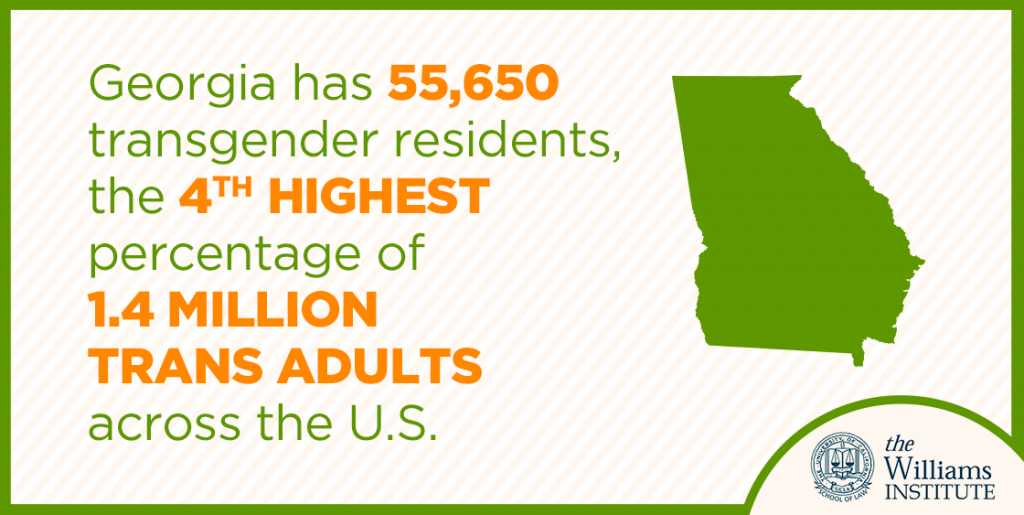How many transgender people are there in the United States? That question has been hard to answer. Data from nearly a decade ago estimates that nearly 700,000, or .03%, of Americans are transgender. But the estimate is just that—gender identity is not something that U.S. government agencies like the Census Bureau have traditionally tracked, and the accuracy of surveys can be compromised by the fact that many transgender people fear reporting.

However, new data is shining a more accurate light on the number of transgender Americans. A study published in June by the UCLA School of Law’s Williams Institute—a think tank dedicated to conducting research on sexual orientation and gender identity in law and public policy—has found that the number of transgender Americans is double what was previously thought: .06%, or 1.4 million people.
And, it turns out, Georgia is home to the fourth-largest number of transgender people in the country, as a percentage of the state’s population, according to the first-ever report to include a state-by-state breakdown of who identifies as transgender. Around 55,650 people—or .75% of the state’s population—identify as transgender. Hawaii, California and New Mexico round out the top three, with percentages at .78% (8,450), .76%, (218,400) and .75% (11,750) respectively.
This information comes at a crucial time for transgender rights in Georgia and across the country. Georgia is one of 33 states that lacks LGBT-inclusive non-discrimination laws. That means that there are no explicit protections prohibiting discrimination against transgender Georgians in housing, employment, or public places like government buildings, shopping malls, restaurants, and doctors offices.
What’s more, as transgender people have become more visible, there has been a corresponding cultural and legislative backlash which could hit Georgia hard when the legislative cycle resumes in 2017.
Just last month, Georgia Attorney General Sam Olens joined officials in 13 other states who are suing the Obama Administration over its attempt to protect transgender children from discrimination. The newly reissued guidelines—which themselves are not new, and have been federal policy since 2014 for states receiving federal aid—simply instruct schools that restricting which restrooms transgender students can use counts as illegal sex discrimination under Title IX of the U.S. Civil Rights Act. Schools that do not follow these guidelines risk losing federal funds—that’s nearly $2 billion in Georgia.
Accurate statistics about who transgender people are and where they live are crucial to effectively advocating for policies like this that protect transgender people from discrimination—at work, at school, and in public places. The new population numbers could prove especially groundbreaking for young people. According the the Williams Institute, the largest percentage of transgender people in terms of group membership is among those ages 18-24, or nearly 8,700 people.
The fact that there are so many transgender people in Georgia, especially young people, should serve as a wake-up call to Attorney General Olens about the human cost of his lawsuit against guidelines intended to protect transgender people from discrimination.
Send a message urging him to drop this misguided lawsuit immediately.
SHARE THIS STORY


 @GeorgiaUnites
@GeorgiaUnites